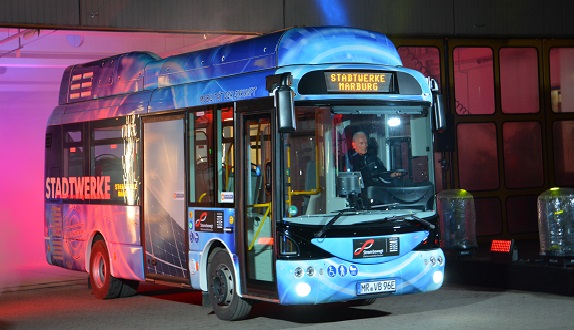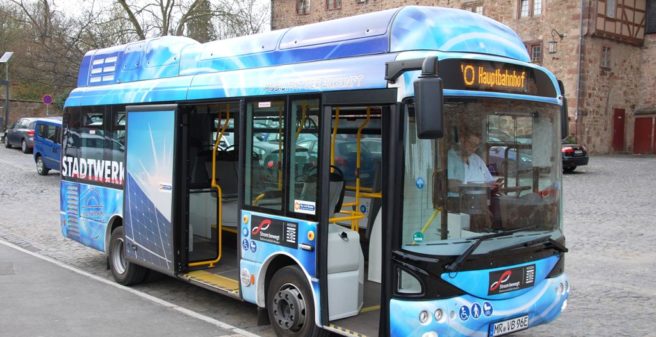
Marburg’s upper town is one of Germany’s most beautiful historical old cities. It lies between the centre in the narrow Lahn valley and the (landgrave’s) castle; Marburg is also considered the original cell of today’s state of Hesse.
In 1954, the city’ public transport operator Stadtwerke Marburg (SWM) introduced a special service under some special conditions: Line 16 started service between Rudolphsplatz and the castle hill via the picturesque Oberstadt (upper town). There was no “off-the-shelf” bus that could do this route, therefore SWM acquired a purpose-built Opel Blitz bus, which, also uniquely, had a body made by the Essen-based coachbuilder Gebrüder Ludewig. Ludewig is widely known as the manufacturer and licensor of the famous one-and-a-half-decker buses. It is possible that this Blitz bus did not even have a diesel engine, but was – like its Blitz brothers of the same age – equipped with the petrol engine of the luxury limousine “Opel Kapitän”.
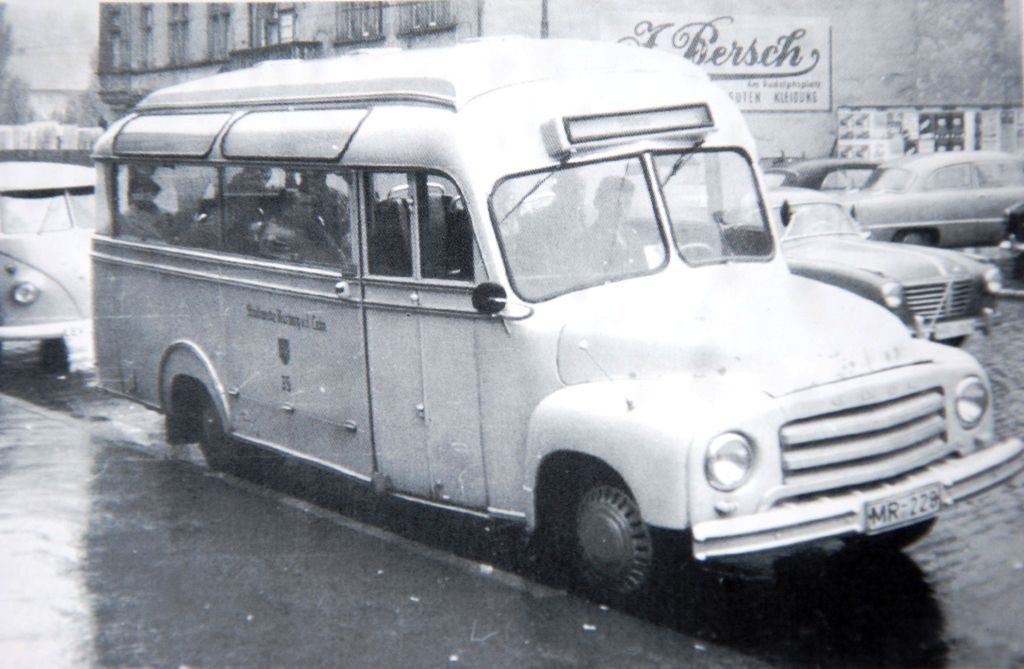
In 1968, the Opel Blitz was replaces by a Mercedes-Benz L 608 D with bodywork by Vetter from Fellbach near Stuttgart – the “L” in its type designation revealed more than unmistakably that it was a coach on a chassis adapted for regular service for “L” coaches.
Over the years, several regular-service midibuses from Setra, Neoplan, Van Hool and the Italian bus manufacturer Breda-Menarinibus were in service, among others also a coach 91, a Van Hool A 507 Z of 1992 vintage.
Photo galery (click to open):
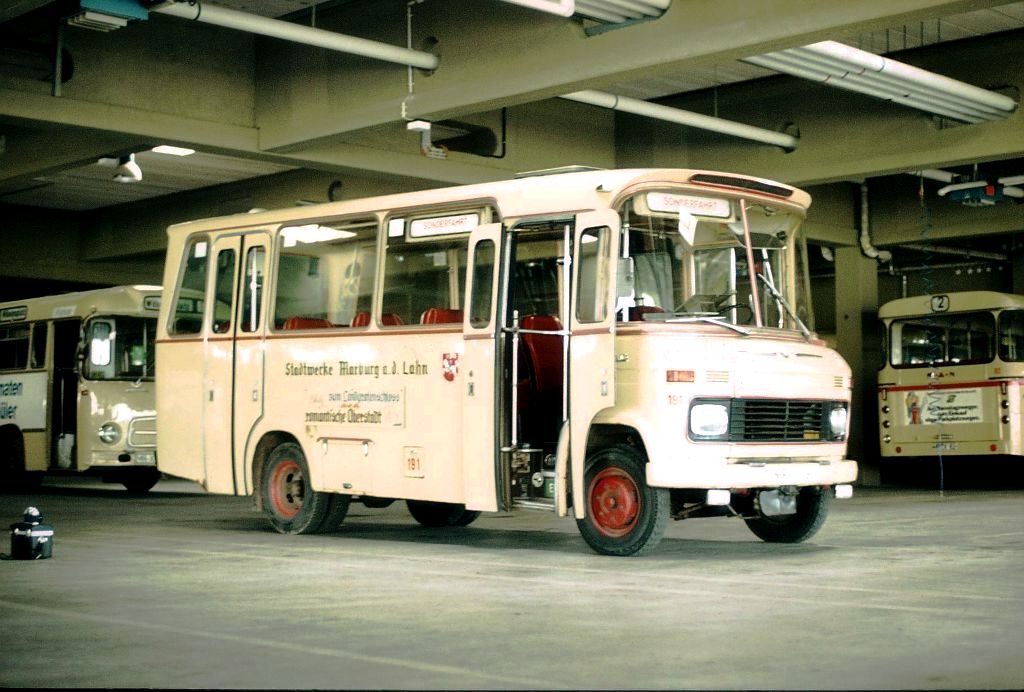
Mercedes-Benz L 608 D / Vetter in June 1980 | © Christian Marquordt 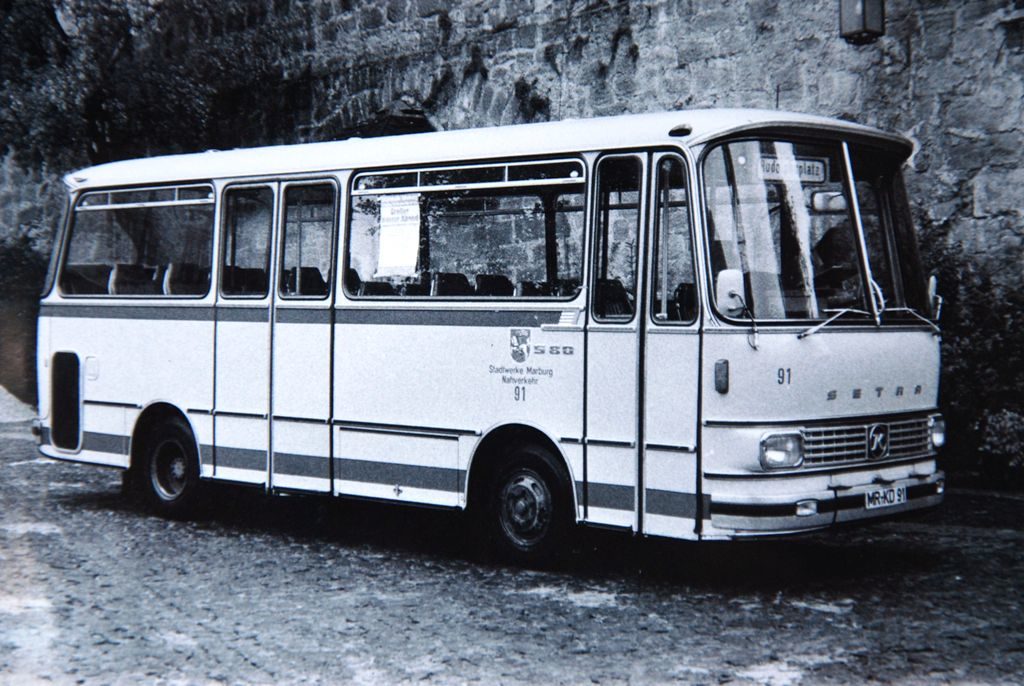
Setra S80 in June 1980 | © Christian Marquordt 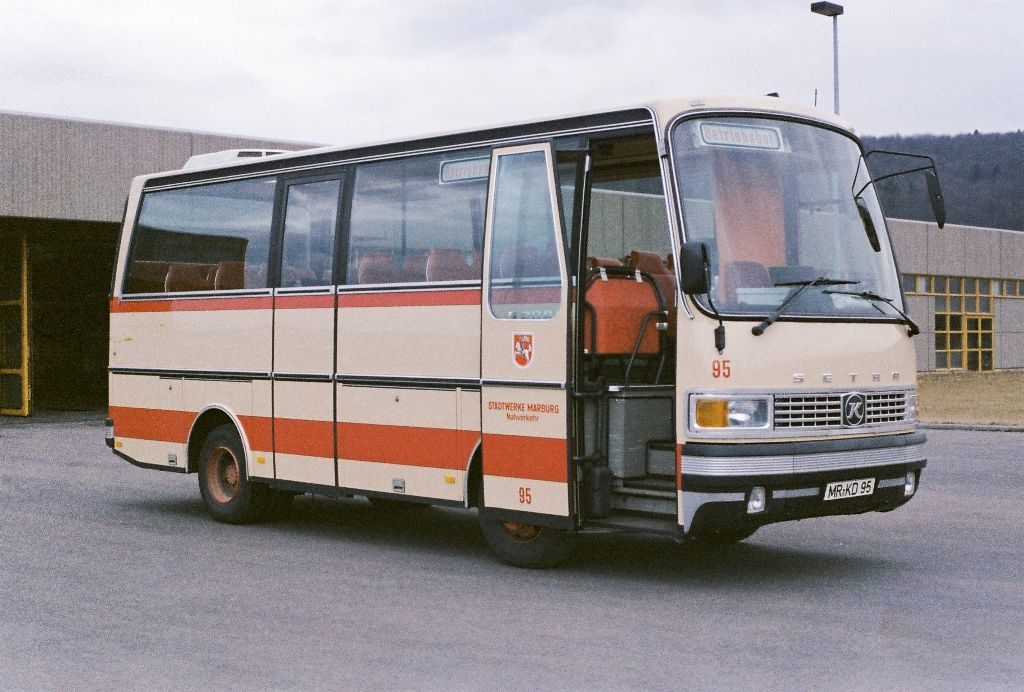
Unusual Setra S209H No. 95 at the depot | © Christian Marquordt 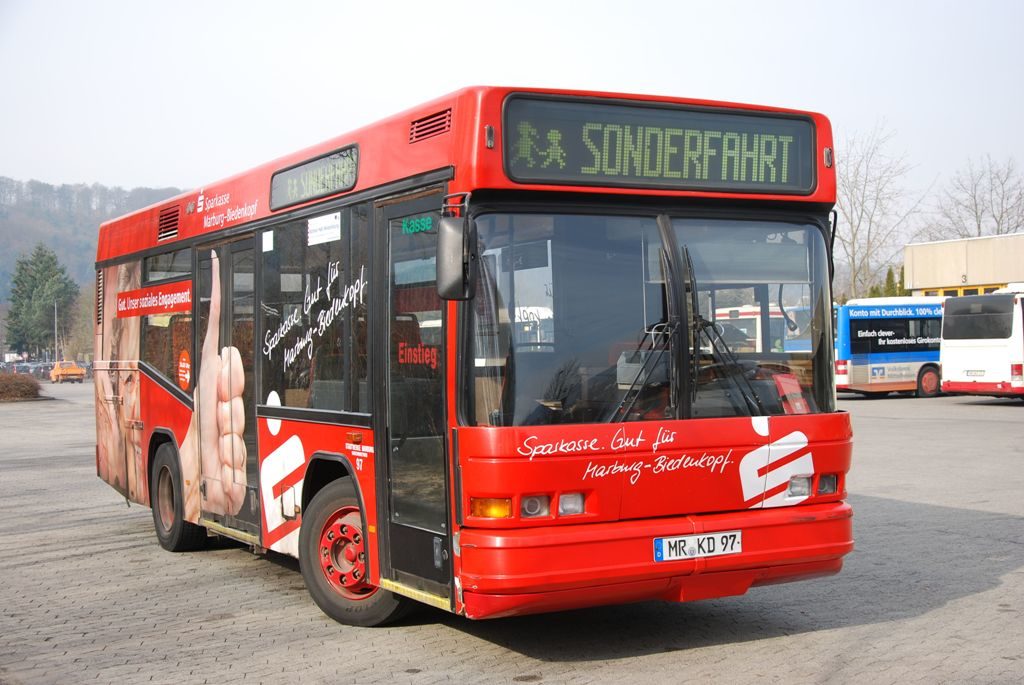
Neoplan N4007 built in 994, here in 2011 still in service | © Christian Marquordt 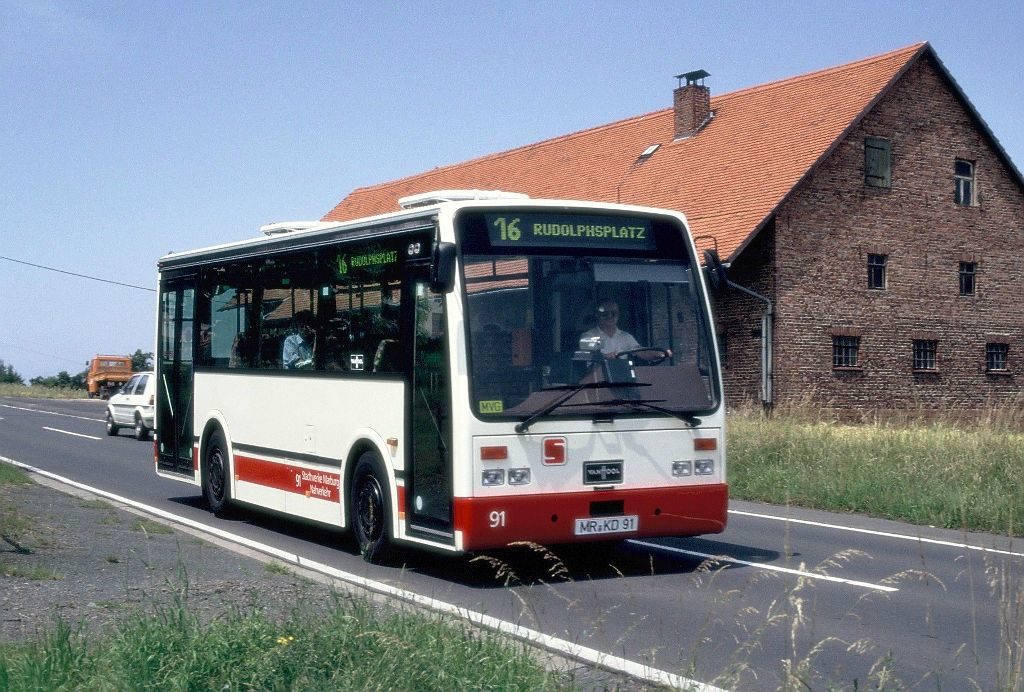
Van Hool A 507 Z no. 91 in 2013 | © Christian Marquordt
The Rampini
At the beginning of this year, Stadtwerke Marburg received two midibuses for their lines 10 (the current number of the line to the castle) and 16, which were produced in series. We are talking about two coaches of the type “E 80” from the Italian manufacturer Rampini. The “E 80” and its somewhat smaller brother “E 60” are especially well known in their home country Italy, but they are not entirely new in Germany either: two Rampini buses run in Hamburg with the VHH as the “Bergziege” (mountain goat) in the Blankenese district, and Rampini buses can also be found in Regensburg.
The small Rampini goes back to a development from before the turn of the millennium. At that time, the Italian manufacturer presented a midibus for the line, which it named “Alé”. Such an “Alé” also once stood at an IAA commercial vehicle show, namely at the MAN stand. The brand with the lion wanted to move into the midibus segment, and so a cooperation with Rampini was agreed: the Italians supplied their midibuses, which were then completed with components from MAN. The finished bus was to be offered on the market as the “MAN Alé”. Today’s midibuses from Rampini do not deny their close relationship to the “Alé”, and why should they? Visually – this personal note is allowed to the author – they are very appealing, just like their eldest brother.
Marburg’s newest “Castle climbers” are battery-electric buses that are recharged during breaks in operation via cables and combo plugs at the depot. There is a small charging column in the depot to which the buses get connected. The buses have Siemens electric motors, the battery cells are placed on the roofs of the vehicles along with air conditioning.
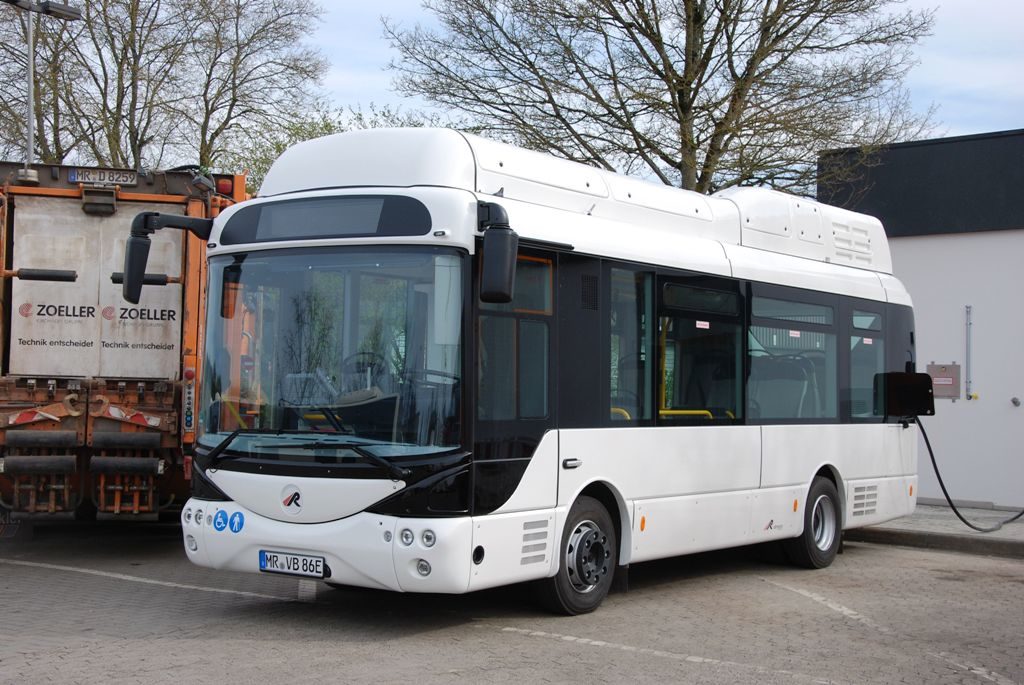
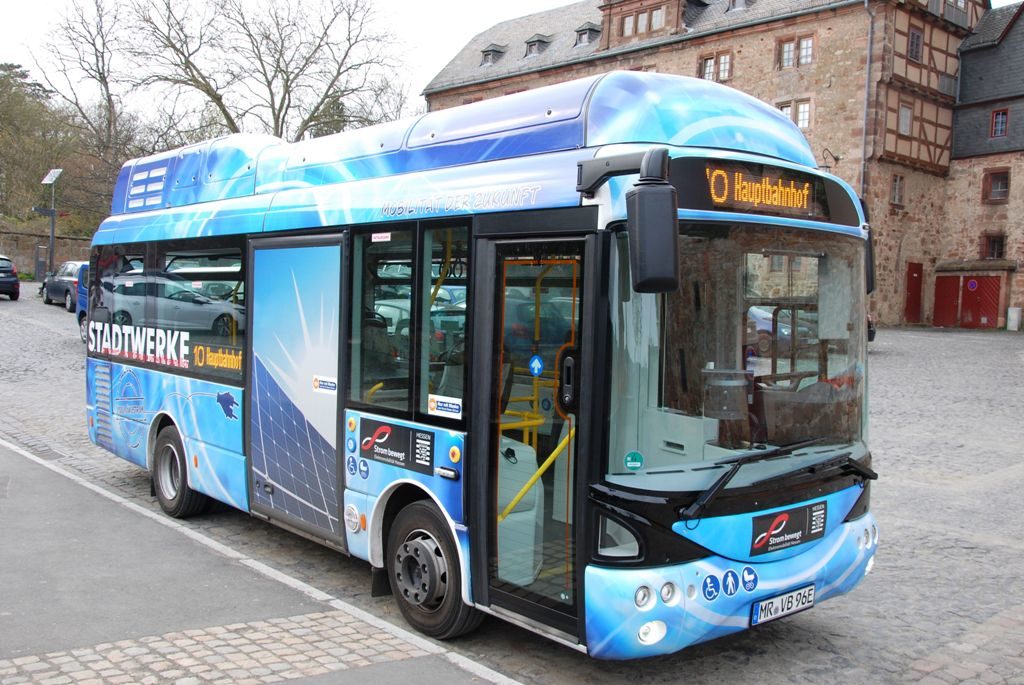
A ride up to the castle, showed a bus that is able to cope with the steep and narrow conditions on the streets of the upper town. Turning at a sharp angle right into very narrow streets would be absolutely impossible for a “full-grown” 12-metre car: the Rampini managed this without the slightest problem. The corners of Sybelstraße / Lutherstraße and Lutherstraße / Gisonenweg are visible examples for its turning capabilities.
A brief conversation with the driver at the Schloss terminus revealed that he was very satisfied with his bus.
The two Marburg Rampini have two doors: a single-width door at the driver’s front that turns inwards when opened, and a double-width door in the middle of the coach. The latter, however, is “amazing” by our standards, because it is a one-piece, outward-swinging sliding door with a width of 1,100 mm. It opens towards the rear. And at this door, of course, there is also a fold-out wheelchair ramp.
Technical data of the Rampini E 80
Length: 7,790 mm
Width: 2,200 mm
Height: 3,250 mm
Wheelbase: 3,675 mm
Turning circle: 14,600 mm
Electronically controlled air suspension
Passenger capacity: 43 to 46 passengers, thereof 12 seated,1 wheelchair space
Elektric motor: Siemens 1 PV 5138, 122 kW
Batteries: Lithium phosphate cells, 300 Ah, 187 kWh
Range: up to 150 kilometres (sufficient for both Marburg lines 10 and 16)
Recuperation during braking
Electrical system: Multiplex Can Bus TEQ
Front axle with independent suspension: ZF
Rear axle: Rampini
Total weight: 12,000 kg
Manufacturer: Rampini Carlo SpA, I-06065 Passignano sul Trasimeno
